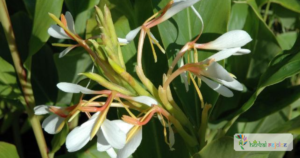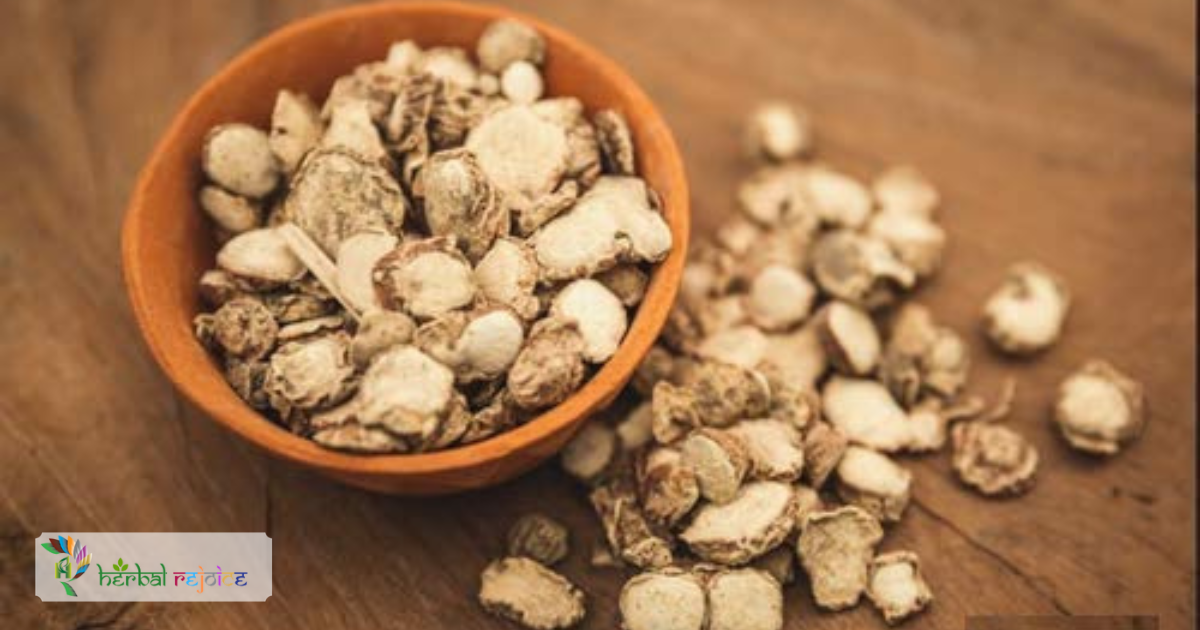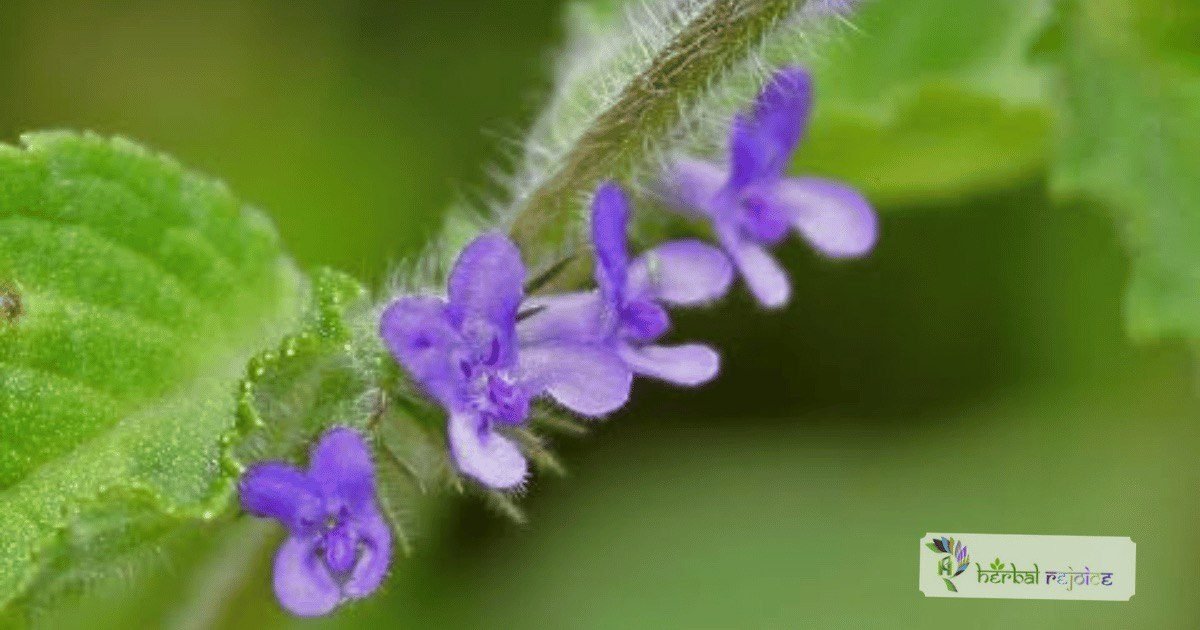Introduction
The Spiked Ginger Lily, or Kapuurkachari in Unani medicine, and Poolankizangu or Kichilikizangu in Siddha/Tamil medicine, has various traditional uses as well as scientifically proven medicinal properties. The rhizome of this plant has been found to possess carminative, spasmolytic, hepatoprotective, anti-inflammatory, antiemetic, antidiarrheal, analgesic, expectorant, antiasthmatic, emmenagogue, hypoglycemic, hypotensive, antimicrobial, anthelmintic, and insect repellent properties.
Spiked Ginger Lily

Names and Habitat of Spiked Ginger Lily
Spiked Ginger Lily (Hedychium spicatum Ham. ex Smith), also known as Shathi, Shati, Gandhashathi, Gandhapalaashi, Kapuurkachari, Suvrataa, Gandhaarikaa, Gandhavadhuu, and Gandhamuulikaa in Ayurveda, is a medicinal plant belonging to the Zingiberaceae family.
It is native to the Central Himalaya region, specifically found at altitudes between 1,100 to 2,500 meters. It is also found in the Eastern and Southern regions of India.
Potential Health Benefits of Spiked Ginger Lily
Studies have shown that the rhizome of Spiked Ginger Lily has a hypotensive effect in dogs at low doses and can lower blood pressure at high doses. An extract made with 50% tOH has exhibited anti-inflammatory and hypoglycemic properties.
This extract has also shown promising results in the treatment of tropical pulmonary eosinophilia in clinical studies. Additionally, the alcoholic extract of the plant has been found to act as a vasodilator, mild hypotensive, and antiseptic in animal models.
Chemical Constituents Of Spiked Ginger Lily
The essential oil obtained from the rhizome of Spiked Ginger Lily has been found to have multiple bioactive components. These include cineole, gamma-terpinene, limonene, betaphellandrene, p-cymene, linalool, and beta-terpineol.
The oil has been shown to have mild tranquillizing effects in male albino rats, as well as antimicrobial properties. It has also been found to inhibit the growth of several fungi.
Furthermore, the ethanol (95%) extract of Spiked Ginger Lily has exhibited antibacterial activity, while the 50% extract has shown antimalarial activity in vitro against the Plasmodium berghei strain.
Dosage
When using Spiked Ginger Lily medicinally, it is recommended to take 1-3 grams of the powdered rhizome.
This can be consumed in the form of capsules, tablets, or added to hot water to make an herbal tea.
Conclusion
In conclusion, Spiked Ginger Lily (Hedychium spicatum Ham. ex Smith) is a versatile medicinal plant with a wide range of therapeutic properties.
It has been used in traditional medicine for centuries and has also been studied scientifically for its various health benefits.
Incorporating Spiked Ginger Lily into your wellness routine may provide relief from various ailments and promote overall well-being.
Frequently Asked Questions(FAQs)
What are the traditional uses of Spiked Ginger Lily?
The traditional uses of Spiked Ginger Lily include carminative, spasmolytic, hepatoprotective, anti-inflammatory, antiemetic, antidiarrheal, analgesic, expectorant, antiasthmatic, emmenagogue, hypoglycemic, hypotensive, antimicrobial, anthelmintic, and insect repellent properties.
What is the botanical name of Spiked Ginger Lily?
The botanical name of Spiked Ginger Lily is Hedychium spicatum Ham. ex Smith.
Where is Spiked Ginger Lily native?
Spiked Ginger Lily is native to the Central Himalaya region.
What are the traditional names of Spiked Ginger Lily in Ayurveda?
The traditional names of Spiked Ginger Lily in Ayurveda are Shathi, Shati, Gandhashathi, Gandhapalaashi, Kapuurkachari, Suvrataa, Gandhaarikaa, Gandhavadhuu, and Gandhamuulikaa.
What are the traditional names of Spiked Ginger Lily in Unani medicine?
The traditional name of Spiked Ginger Lily in Unani medicine is Kapuurkachari.
What are the traditional names of Spiked Ginger Lily in Siddha/Tamil medicine?
The traditional names of Spiked Ginger Lily in Siddha/Tamil medicine are Poolankizangu or Kichilikizangu.
What are the scientifically proven medicinal properties of Spiked Ginger Lily?
The scientifically proven medicinal properties of Spiked Ginger Lily include carminative, spasmolytic, hepatoprotective, anti-inflammatory, antiemetic, antidiarrheal, analgesic, expectorant, antiasthmatic, emmenagogue, hypoglycemic, hypotensive, antimicrobial, anthelmintic, and insect repellent properties.
Does Spiked Ginger Lily have a hypotensive effect?
Yes, Spiked Ginger Lily has a hypotensive effect, meaning it can lower blood pressure.
How can Spiked Ginger Lily be consumed for medicinal purposes?
Spiked Ginger Lily can be consumed in the form of capsules, tablets, or added to hot water to make an herbal tea.
What are the bioactive components of the essential oil obtained from Spiked Ginger Lily?
The bioactive components of the essential oil obtained from Spiked Ginger Lily include cineole, gamma-terpinene, limonene, betaphellandrene, p-cymene, linalool, and beta-terpineol.
Does the essential oil of Spiked Ginger Lily have tranquilizing effects?
Yes, the essential oil of Spiked Ginger Lily has been found to have mild tranquilizing effects.
Does the essential oil of Spiked Ginger Lily have antimicrobial properties?
Yes, the essential oil of Spiked Ginger Lily has antimicrobial properties.
Can the essential oil of Spiked Ginger Lily inhibit the growth of fungi?
Yes, the essential oil of Spiked Ginger Lily has been found to inhibit the growth of several fungi.
Does the alcoholic extract of Spiked Ginger Lily have any health benefits?
Yes, the alcoholic extract of Spiked Ginger Lily has been found to act as a vasodilator, mild hypotensive, and antiseptic in animal models.
Does the rhizome of Spiked Ginger Lily have antibacterial activity?
Yes, the ethanol (95%) extract of Spiked Ginger Lily has exhibited antibacterial activity.
Does the rhizome of Spiked Ginger Lily have antimalarial activity?
Yes, the 50% extract of the rhizome of Spiked Ginger Lily has shown antimalarial activity in vitro against the Plasmodium berghei strain.
How much powdered rhizome of Spiked Ginger Lily should be taken for medicinal use?
It is recommended to take 1-3 grams of powdered rhizome of Spiked Ginger Lily for medicinal use.





